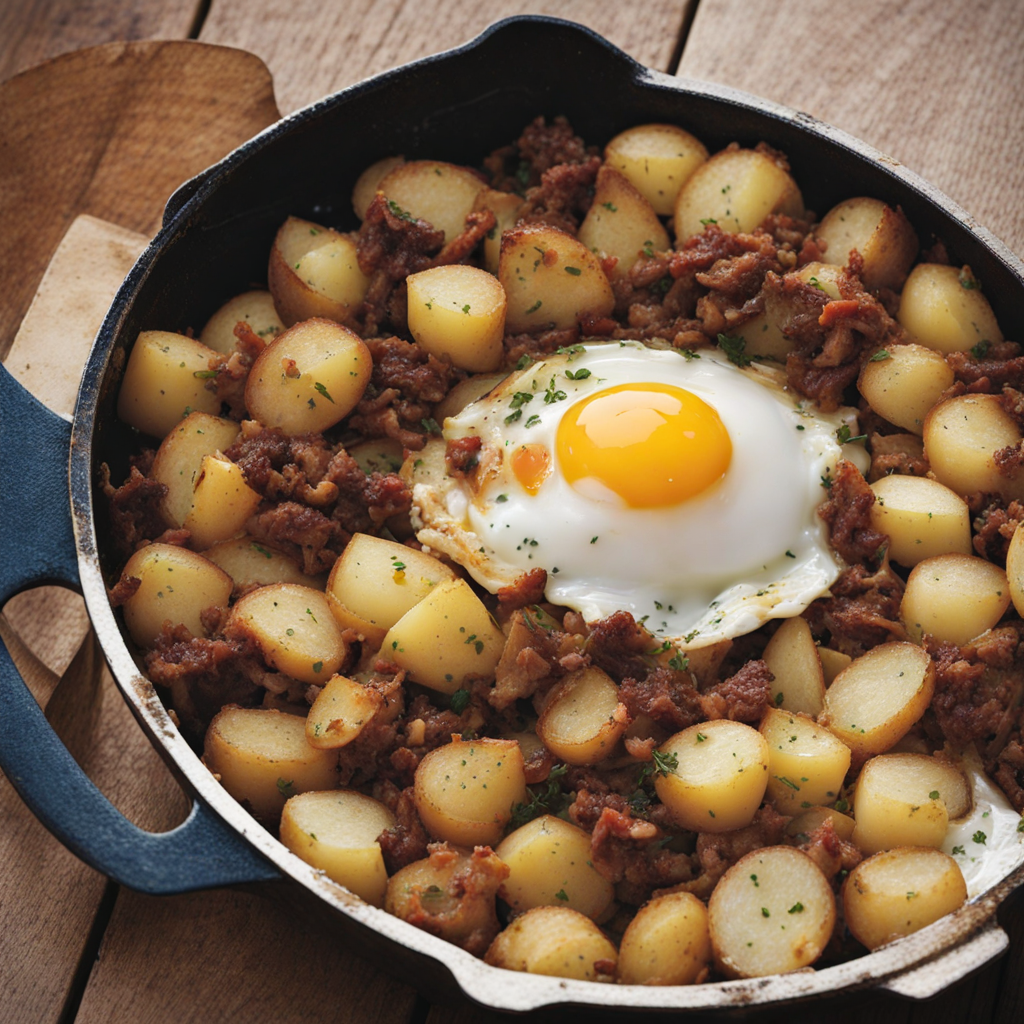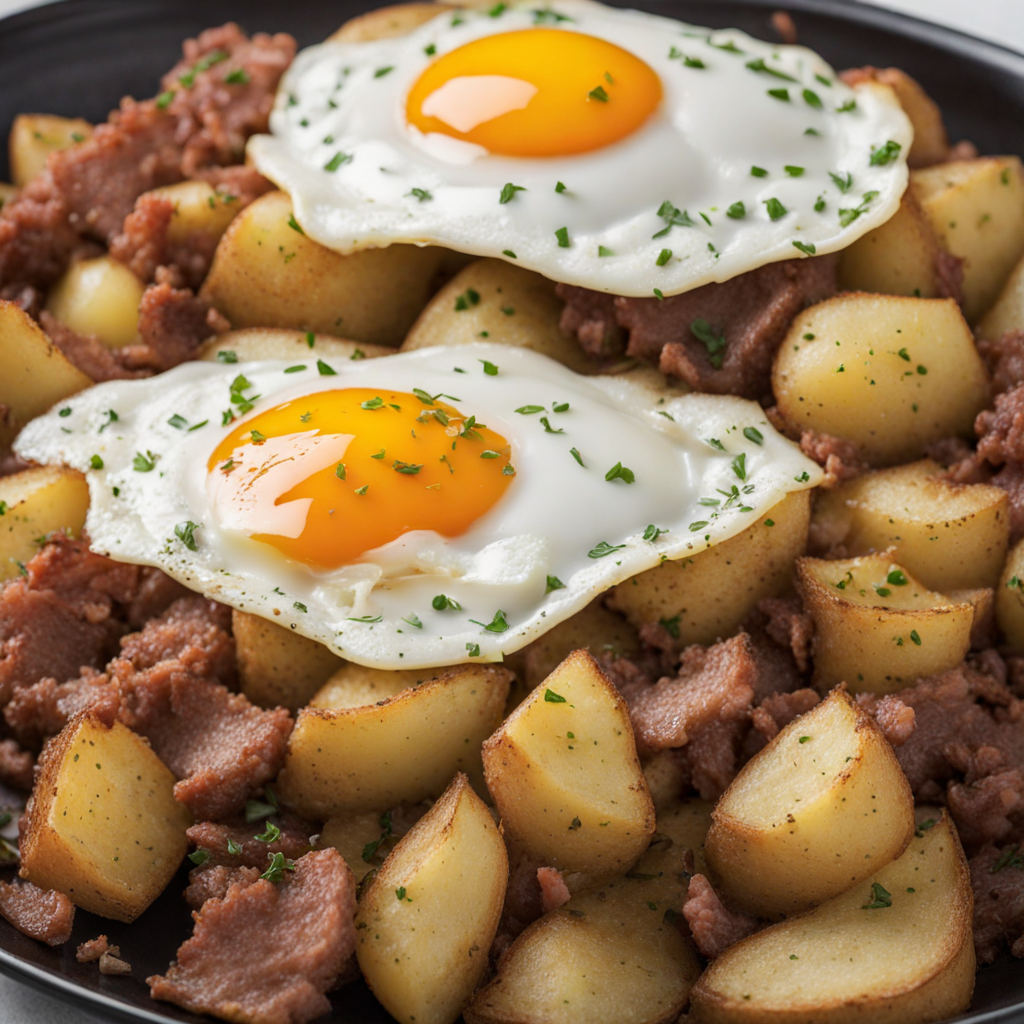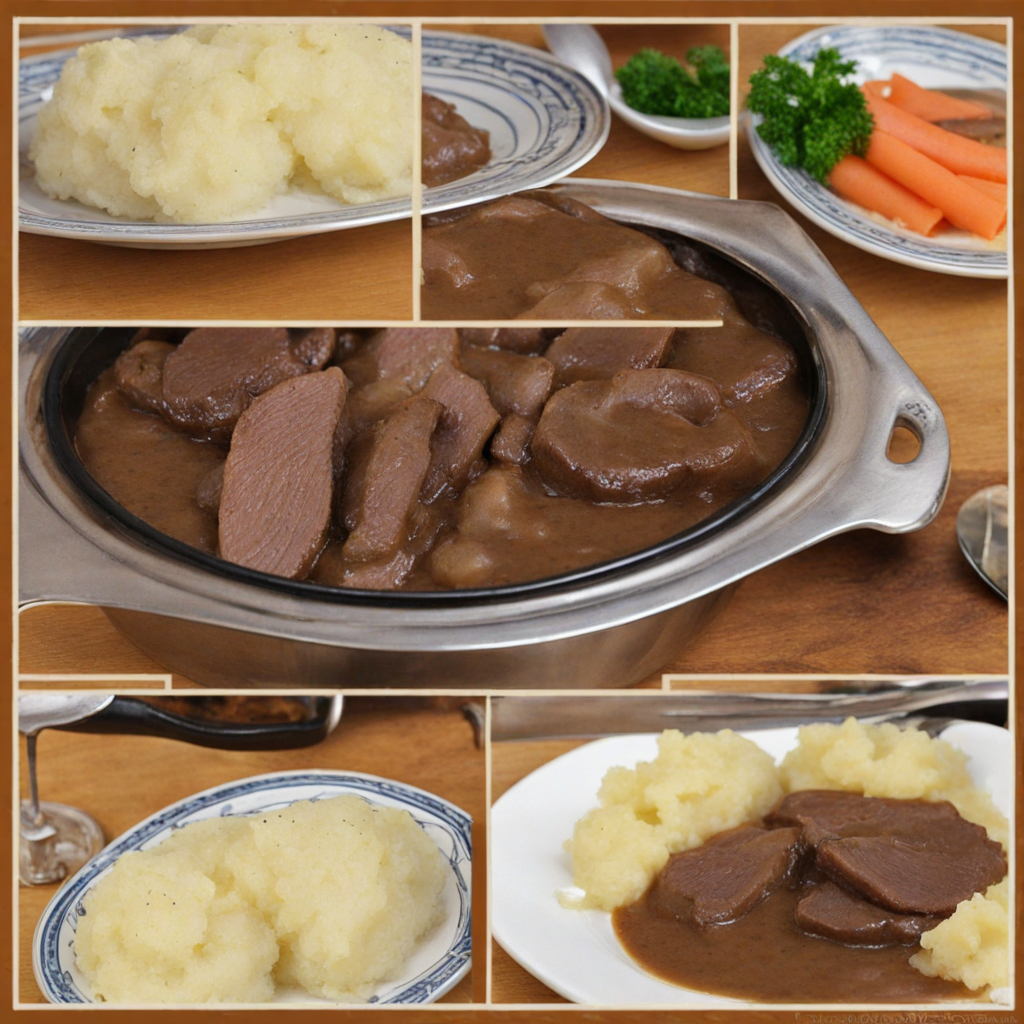Biksemad
Biksemad is a hearty Danish dish that embodies the essence of comfort food, perfect for those seeking a new culinary adventure. Traditionally made from leftover meat, potatoes, and onions, this dish is a delicious way to repurpose ingredients that might otherwise go to waste. The ingredients are diced into small cubes and then pan-fried until they develop a golden-brown crust, offering a delightful contrast between crispy exteriors and tender interiors. Flavorful spices and seasonings, often including salt and pepper, enhance the dish, making it a satisfying meal any time of the day. One of the unique aspects of Biksemad is its flexibility. While the classic version might feature beef or pork, modern variations can include chicken or even vegetarian options using plant-based proteins. The addition of pickled beets is a common practice, adding a pop of color and a tangy contrast that brightens the dish. Many Danes enjoy topping their Biksemad with a fried egg, which not only adds richness but also elevates the overall presentation, making it a feast for the eyes as well. As you dig into Biksemad, you’ll find that its simplicity belies its satisfying complexity. The melding of flavors from the crispy potatoes, savory meat, and sweet onions creates a symphony of tastes that is both comforting and invigorating. Whether enjoyed for breakfast, lunch, or dinner, this dish captures the spirit of Danish home cooking and invites you to savor each bite, making it a delightful choice for anyone eager to explore new flavors.
How It Became This Dish
The History of Biksemad: Denmark’s Rustic Culinary Gem Introduction Biksemad, often referred to as "the Danish hash," is a hearty dish that embodies the spirit of Danish home cooking. Known for its simplicity and resourcefulness, Biksemad is typically made from leftover meats and potatoes, all sautéed together with onions and seasoned to taste. This dish not only highlights the resourcefulness of Danish cuisine but also reflects the country's culinary history, which is deeply intertwined with agricultural practices, social customs, and a love for comfort food. Origins and Early Influences The origins of Biksemad can be traced back to the late 19th and early 20th centuries when Denmark was primarily an agrarian society. The name "Biksemad" itself translates to "scraps food" or "mixed food," which points to its roots in frugality and thrift. In a time when food scarcity was a reality for many, especially during the harsh winters, families needed to find ways to utilize leftover ingredients. This necessity led to the creation of dishes like Biksemad, where whatever was available in the pantry could be combined to create a filling meal. The dish's primary components—potatoes and various meats—reflect the agricultural backbone of Denmark. Potatoes were introduced to Denmark in the late 18th century and quickly became a staple food, replacing grains as the backbone of many meals. Meat, on the other hand, has been a part of the Danish diet for centuries, with pork and beef being the most common. The combination of these ingredients in a single, hearty dish speaks to the ingenuity of Danish home cooks who aimed to minimize waste while maximizing flavor. Cultural Significance Biksemad holds a unique place in Danish culture, symbolizing not only practicality but also a sense of community and togetherness. It is often served as a comforting meal after a long day, bringing families and friends together around the dinner table. In many Danish households, it is customary to prepare Biksemad on Sundays, using leftovers from the week, making it a cherished family tradition. Beyond the home, Biksemad has also found a place in Danish restaurants and cafes, often appearing on menus as a nostalgic reminder of home cooking. Its rustic appeal makes it a popular choice for both locals and tourists seeking an authentic taste of Denmark. The dish’s versatility allows chefs to experiment with different meats, spices, and accompaniments, making it a canvas for culinary creativity while still honoring its traditional roots. Development Over Time As Denmark's culinary landscape evolved throughout the 20th century, so too did Biksemad. The post-World War II era saw significant changes in food production and availability, with the introduction of convenience foods and processed ingredients. While traditional recipes remained popular, many families began to adapt Biksemad to incorporate these new options, making it easier and faster to prepare. The modern interpretation of Biksemad often includes the use of pre-cooked or frozen ingredients, which can significantly reduce preparation time. However, many still hold onto traditional methods, believing that freshly cooked ingredients yield the best flavor. This dichotomy reflects a broader trend in contemporary Danish cuisine, where there is a growing emphasis on sustainability and local sourcing alongside convenience. In recent years, Biksemad has also embraced a more health-conscious approach. With the rise of dietary considerations and the influence of global cuisines, many have begun to experiment with incorporating vegetables and alternative proteins into the dish. Ingredients like kale, root vegetables, and even plant-based meats have started to appear in variations of Biksemad, appealing to a new generation of eaters who are eager to keep traditional dishes relevant. Biksemad in the Modern Culinary Scene Today, Biksemad is celebrated not only in homes but also in the culinary scene of Denmark. It has made its way into food festivals and gourmet restaurants, where chefs elevate the dish by using high-quality ingredients and innovative cooking techniques. In these settings, Biksemad can be found served with gourmet twists, such as truffle oil, smoked meats, or artisanal sauces, showcasing its adaptability and enduring appeal. Moreover, the rise of social media has played a significant role in the revival and popularization of traditional dishes like Biksemad. Food bloggers and influencers share their takes on the dish, highlighting both its comforting essence and modern interpretations. This visibility has sparked renewed interest among younger generations, who seek to connect with their culinary heritage while exploring new flavors and techniques. Conclusion Biksemad is more than just a dish; it is a reflection of Danish culture, history, and the enduring value of home cooking. Its roots in frugality and resourcefulness resonate with the modern emphasis on sustainability and waste reduction. As it continues to evolve, Biksemad will likely remain a beloved staple in Danish households, representing both tradition and innovation. In a world increasingly dominated by fast food and convenience, Biksemad serves as a reminder of the importance of connection—both to the land that provides our ingredients and to the people we share our meals with. Whether enjoyed in a cozy home or at a trendy restaurant, this dish encapsulates the essence of Danish comfort food, bridging the past with the present and ensuring its place in Denmark's culinary future.
You may like
Discover local flavors from Denmark







